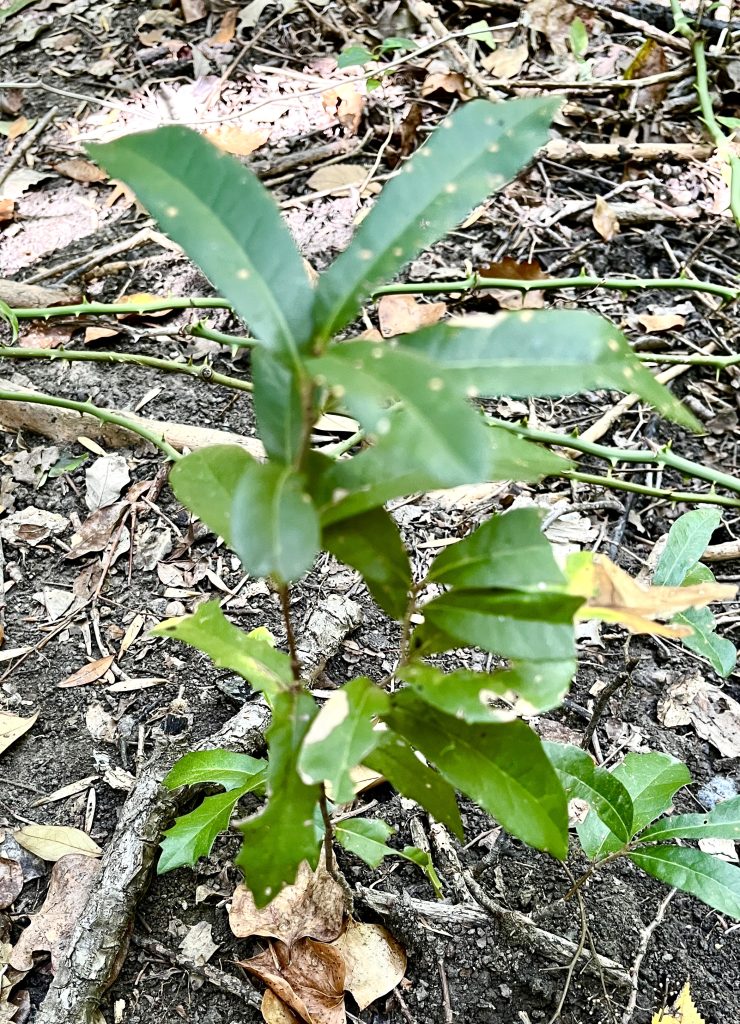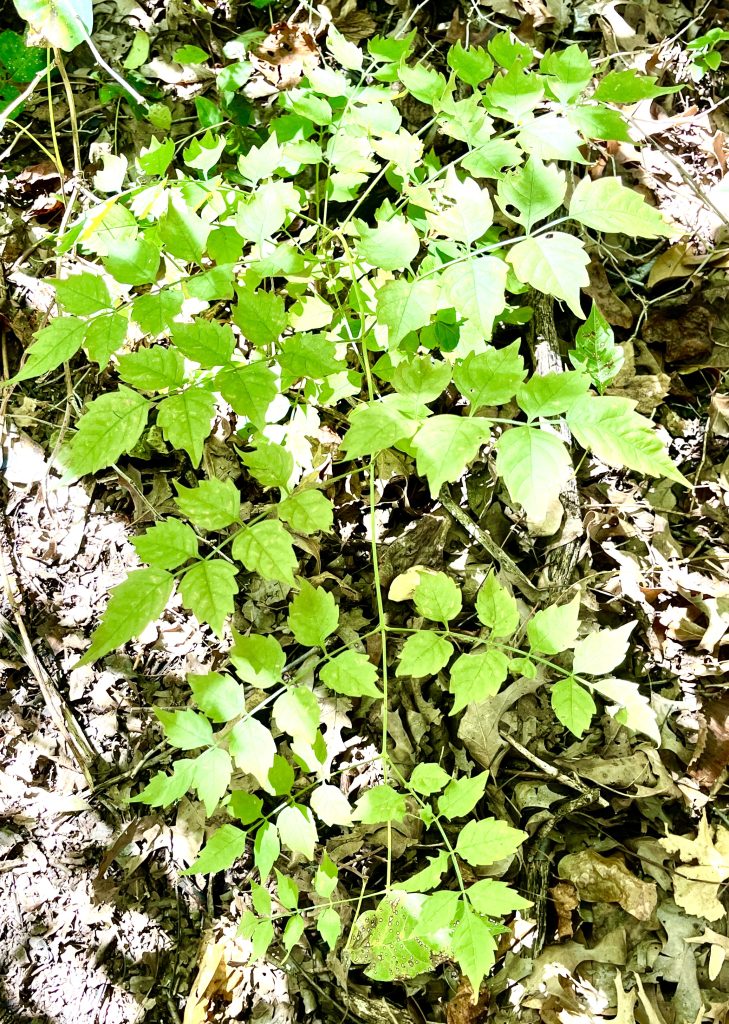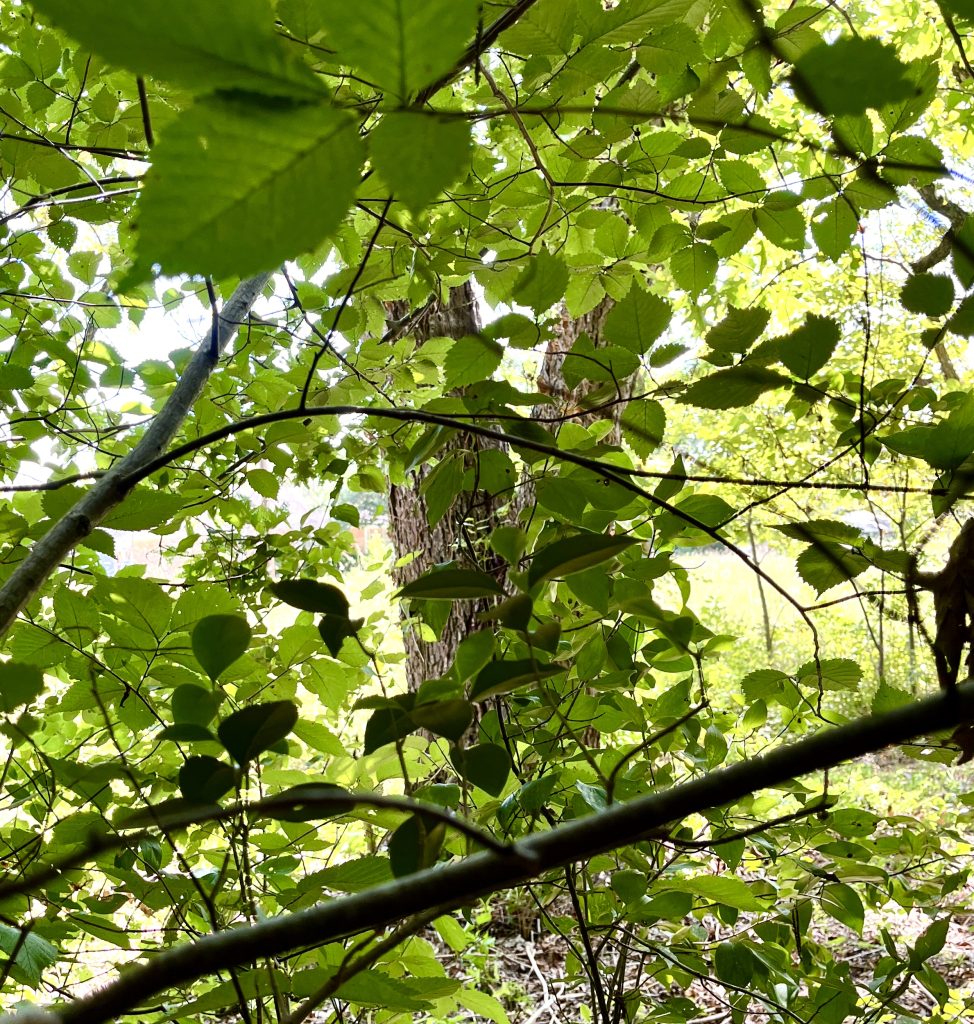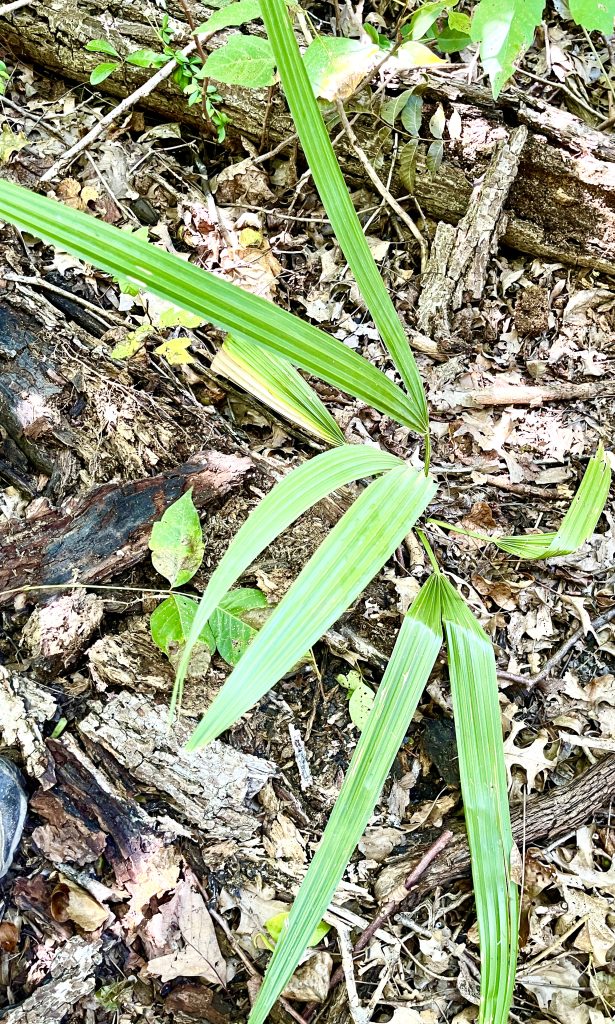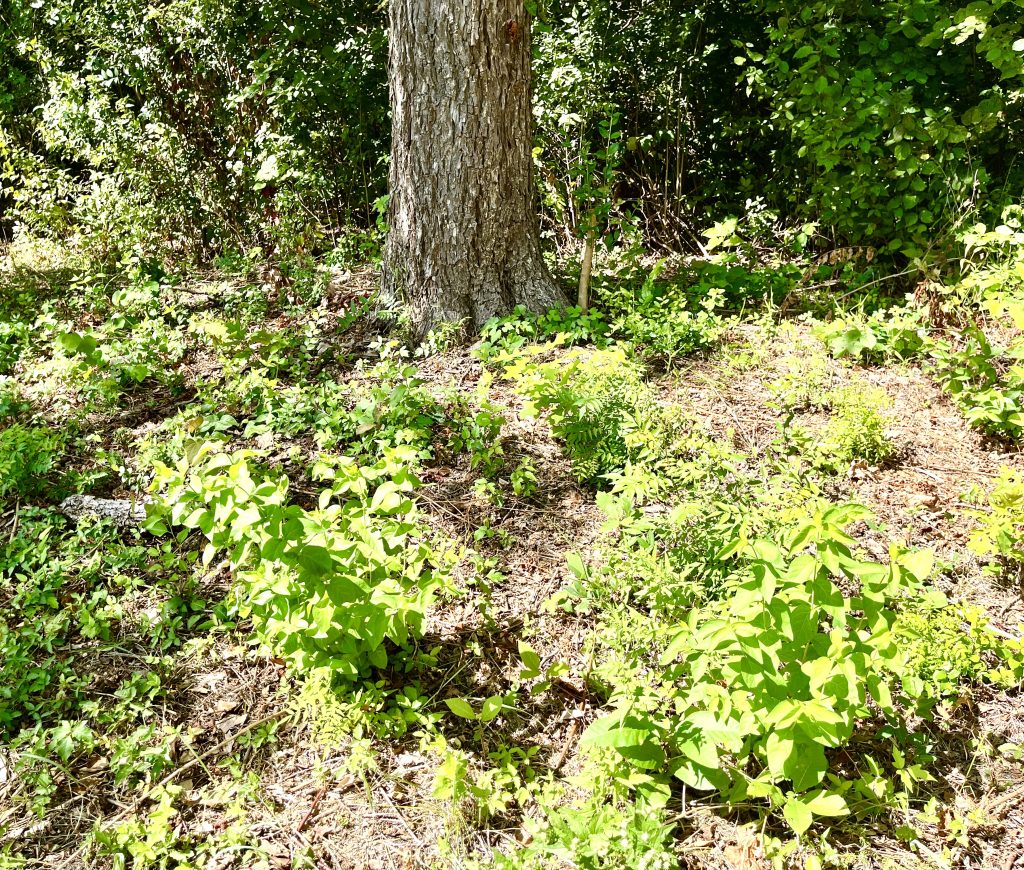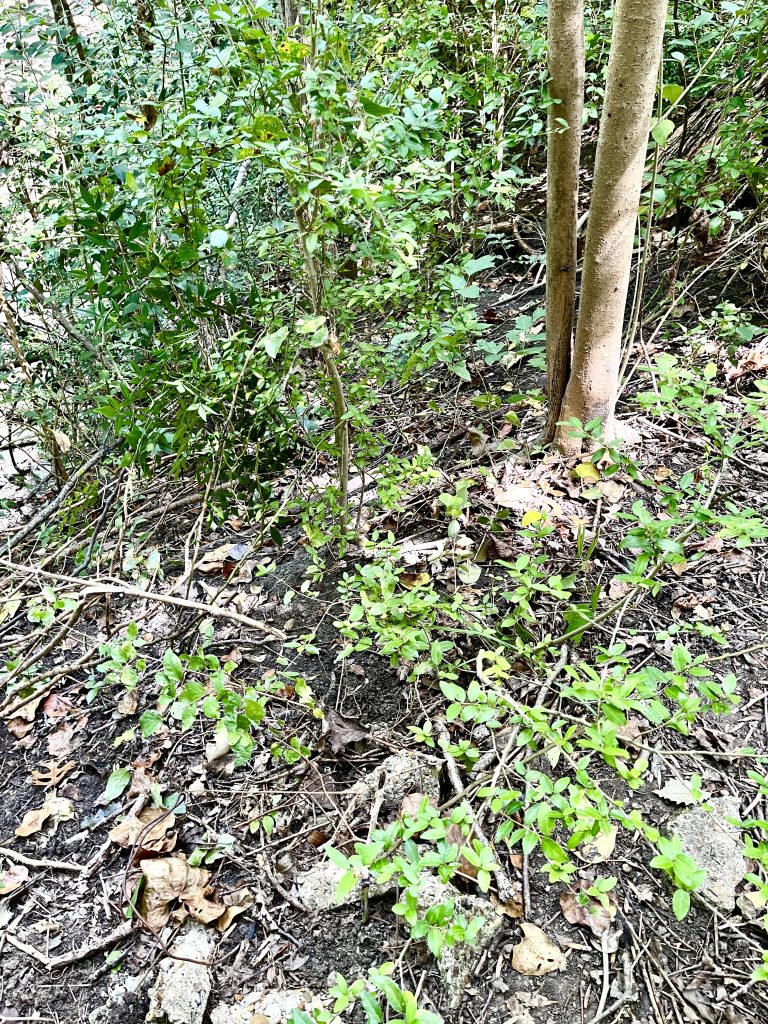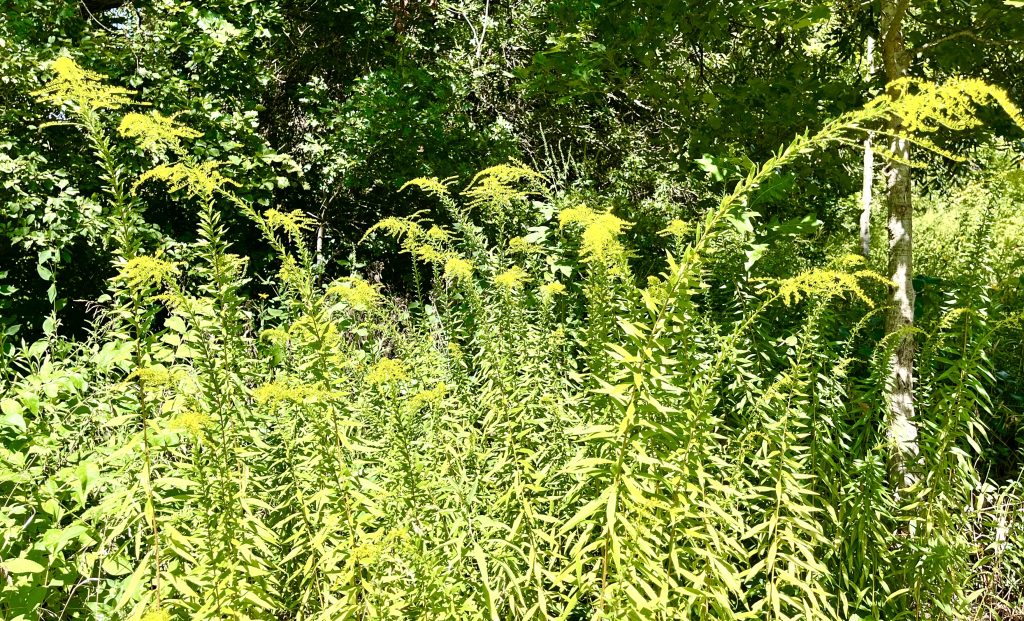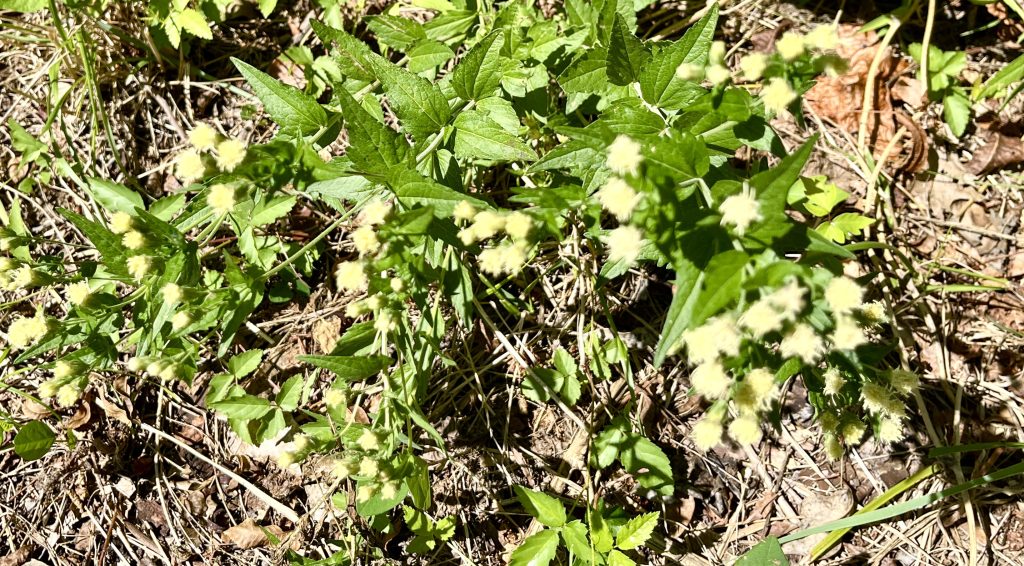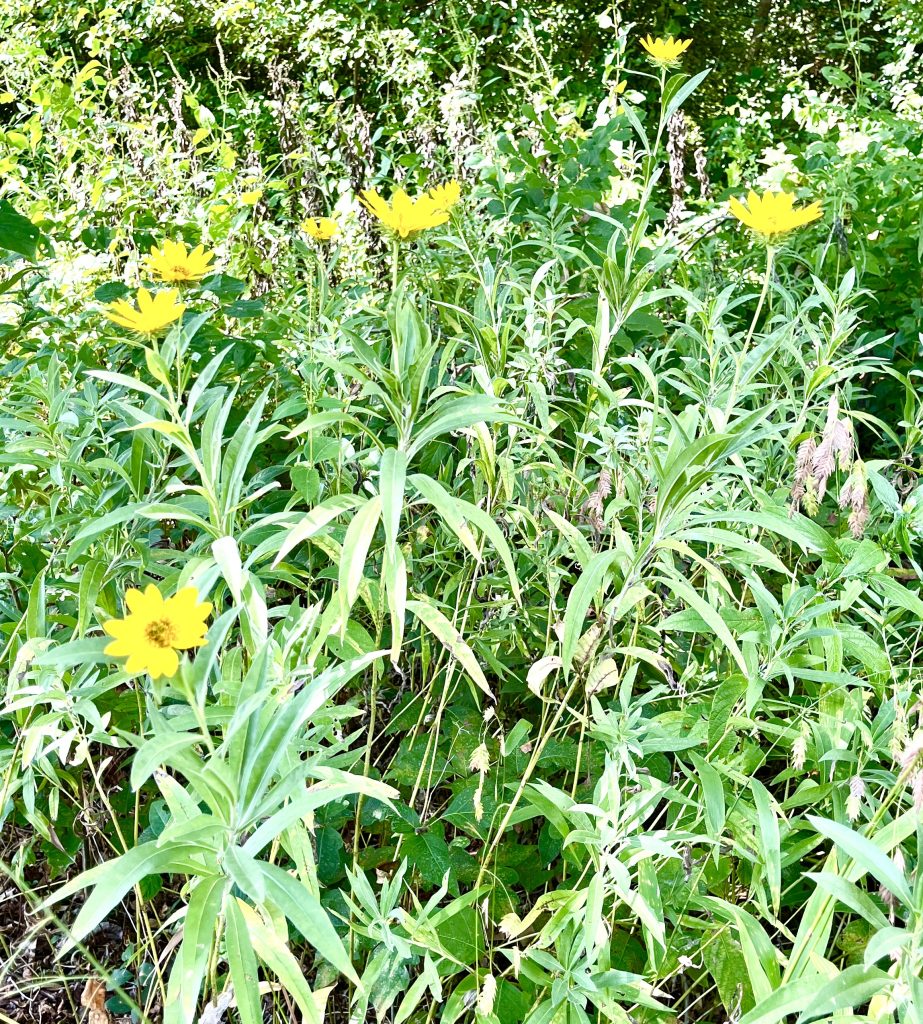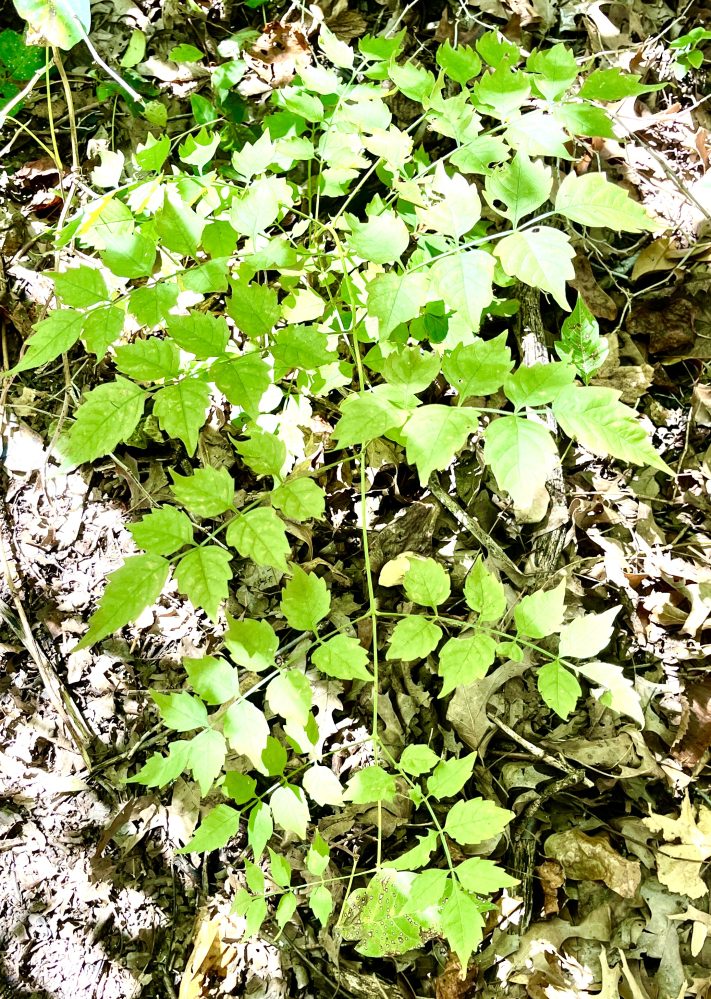
Eastward Ho, part 2! Discovery of the Druid, Saw Palmetto, & Big Ole Bois D’Arc
Eastward Ho, part 2!
Discovery of the Druid, Saw Palmetto, & Big Ole Bois D’Arc
by Amy Martin, Guild coordinator
Earlier this month — after the Greenbelt Guild continued trail-making eastward from Steve Pickett’s re-routing of the Woods trail from the creek — Steve returned and continued their work. Find the gap behind the historic pecan off the trail ino the meadow we’re reclaiming from invasives. Enter a few feet and look right — you’ll see his orange ties.
While working, HE FOUND THE DIXON BRANCH DRUID! aka, an 18-inch concrete statue of St. Francis of Assisi. We’ve no idea who placed it there nearly two decades ago, but it’s in mighty good shape for being broken, albeit neatly, in two.
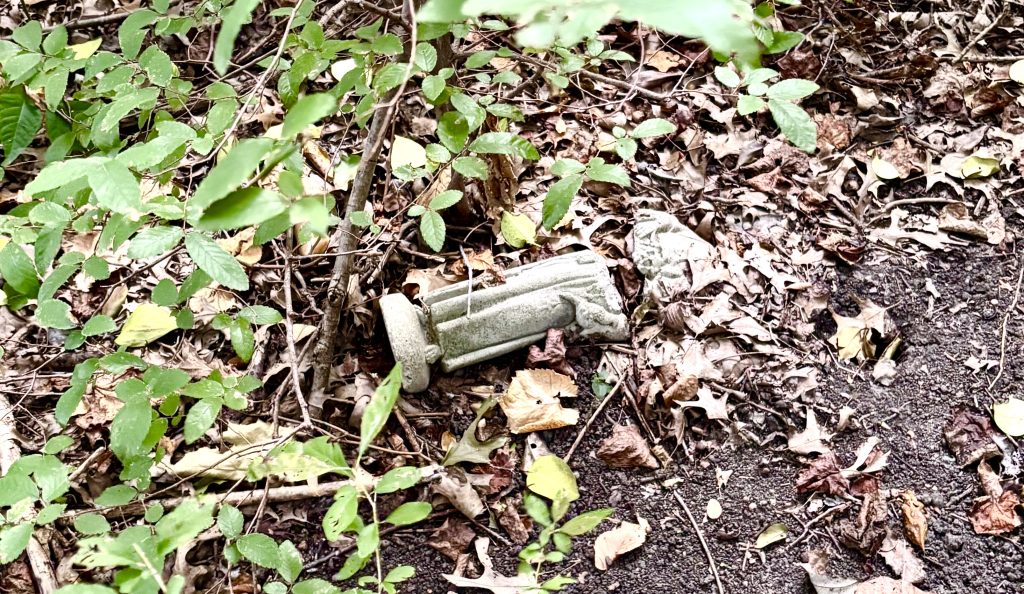
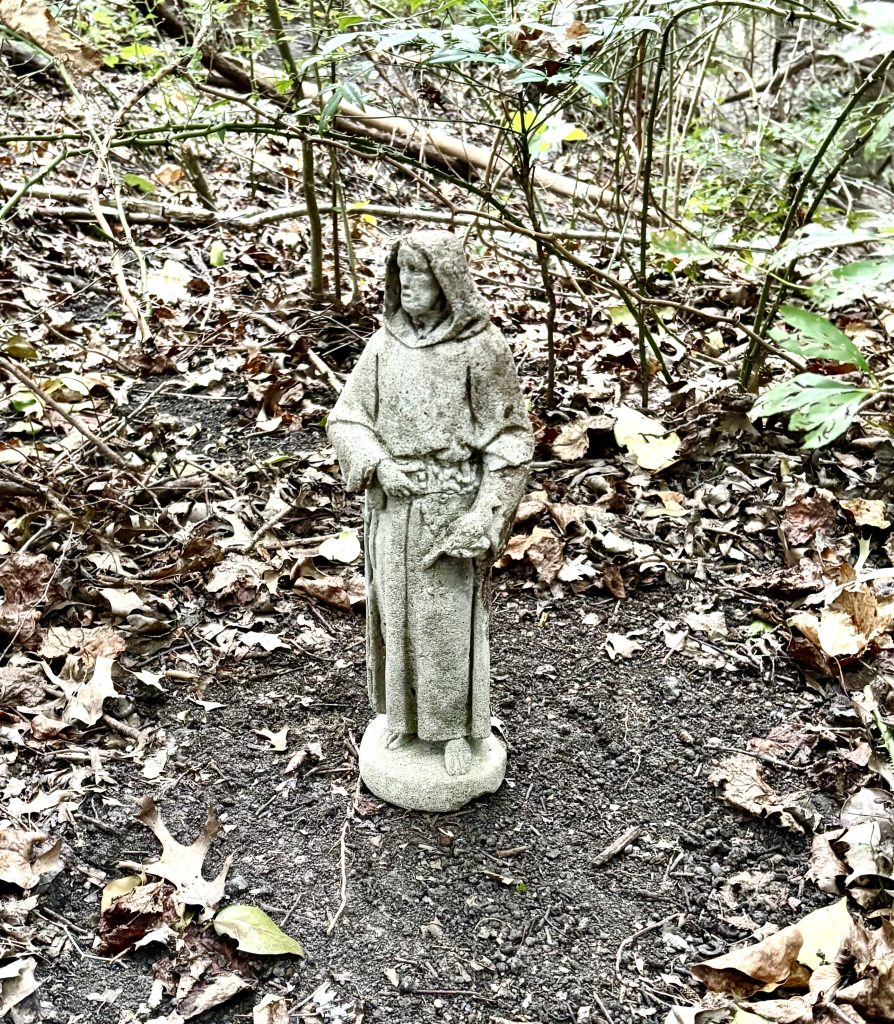
Trail Report
I skipped exercise class on a cool morning and worked the trail for a couple of hours with my dog this week. The old trail was easy to find — just seek out all the privet and bush honeysuckle that had been cut (but not treated) before and regrown with a plethora of skinny trunks.)
I widened the trail a bit, killed every poison ivy and briar within lopper’s length of the trail, and made several iNaturalist observations of cool plant discoveries. Then I wrangled the Druid home.
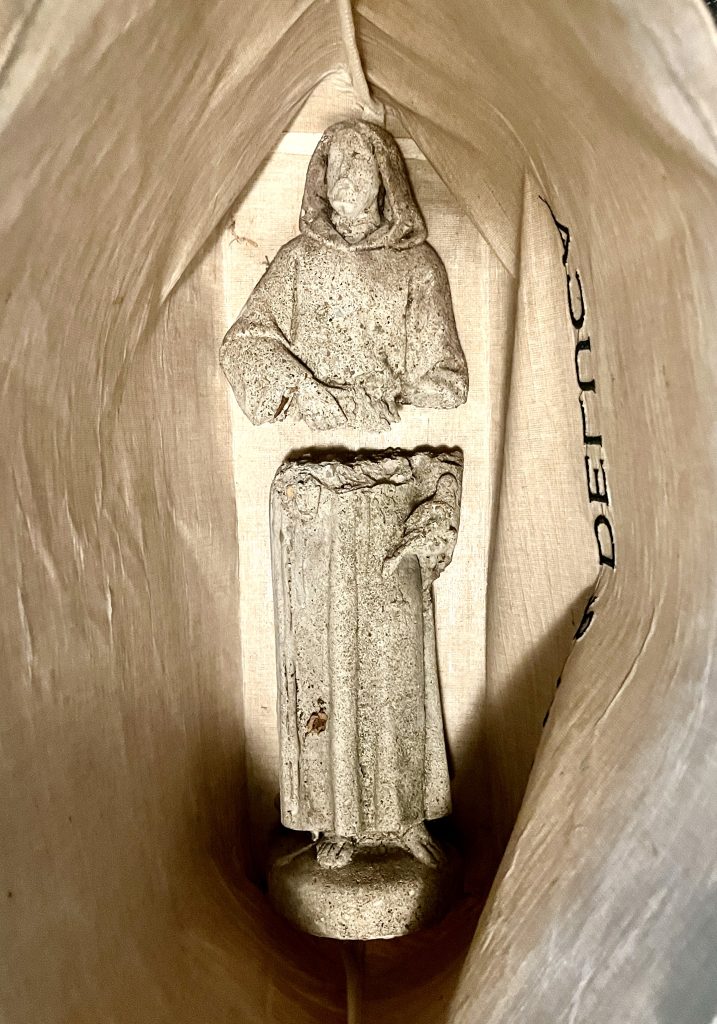
It’s a neat trail on a high bank, so it doesn’t get flooded. Meanders a bit, mainly to get around some monster Chinese privet and glossy (big-leaf) privet, but we can saw them down next restoration day.
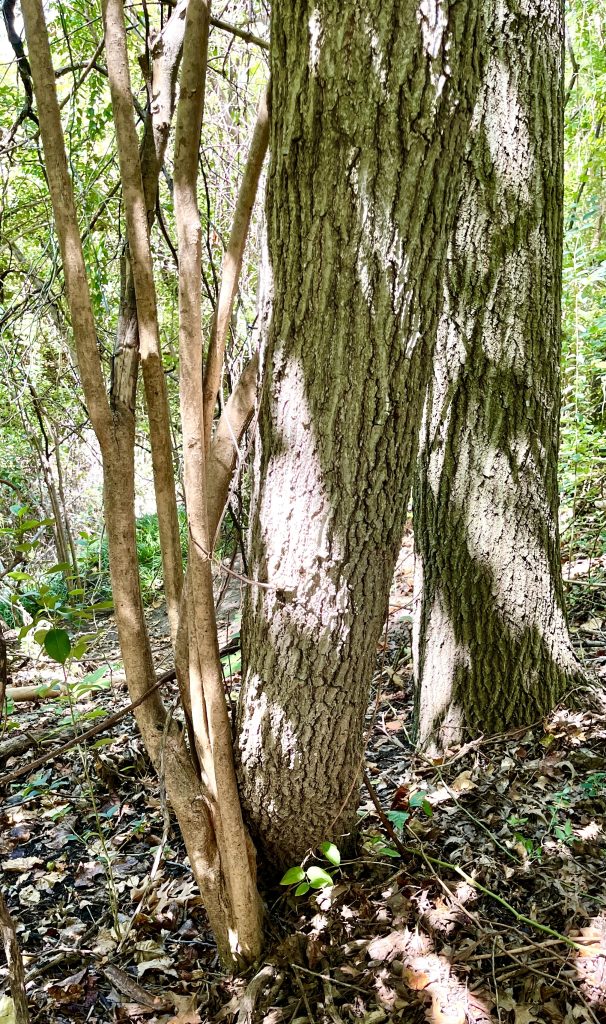
At that point in the trail, you’re near where the creek and woods turn left to parallel Creekmere.
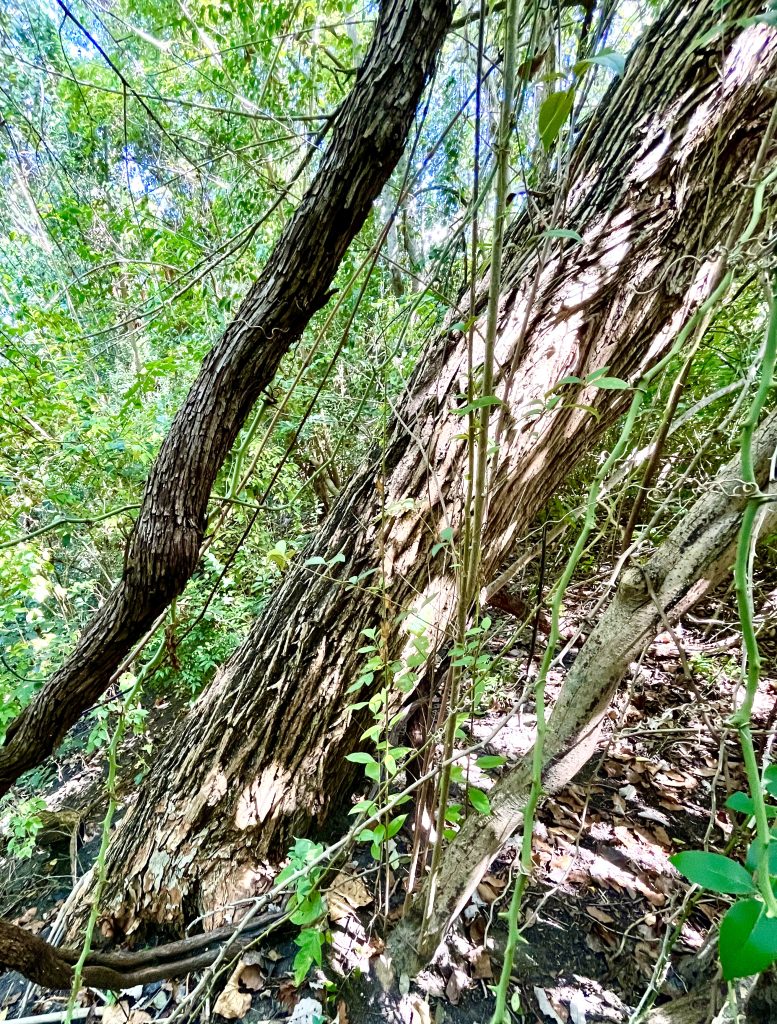
At the next restoration day, a half-dozen folks could widen this section, cut down the monster big-leaf privets, dispatch a couple dozen smaller privets and nandinas, and drag it all to the curb in under 90 minutes.
Then we’ll keep moving east and see if we can make a rudimentary trail all the way to Lippitt. Once to the end, we can slip across the street to dispatch an invasive (and very stinky) tree of heaven on the creek tributary, which we definitely don’t want to get loose in the greenbelt.
One notable aspect of this trail is that it’s a narrow strip of woods, too narrow for woodland mammals to do much there, so our disturbance is minimal. We can use some of the brush we cut to construct stick shelters on the edge of the woods for bunnies and reptiles to burrow beneath.
Cool Plant Discoveries
Along the way, I found neat green things:
